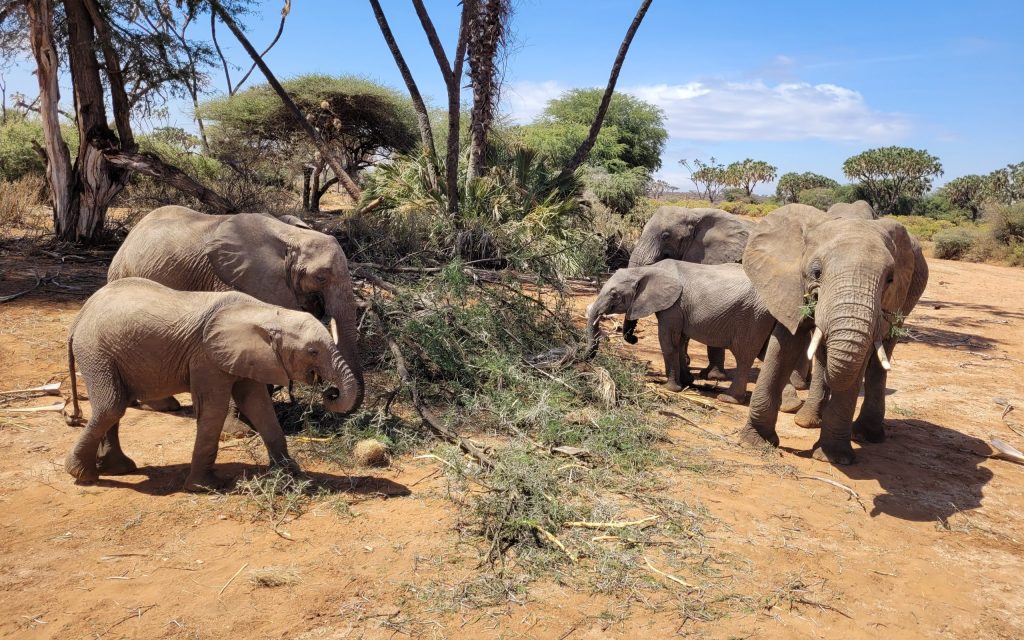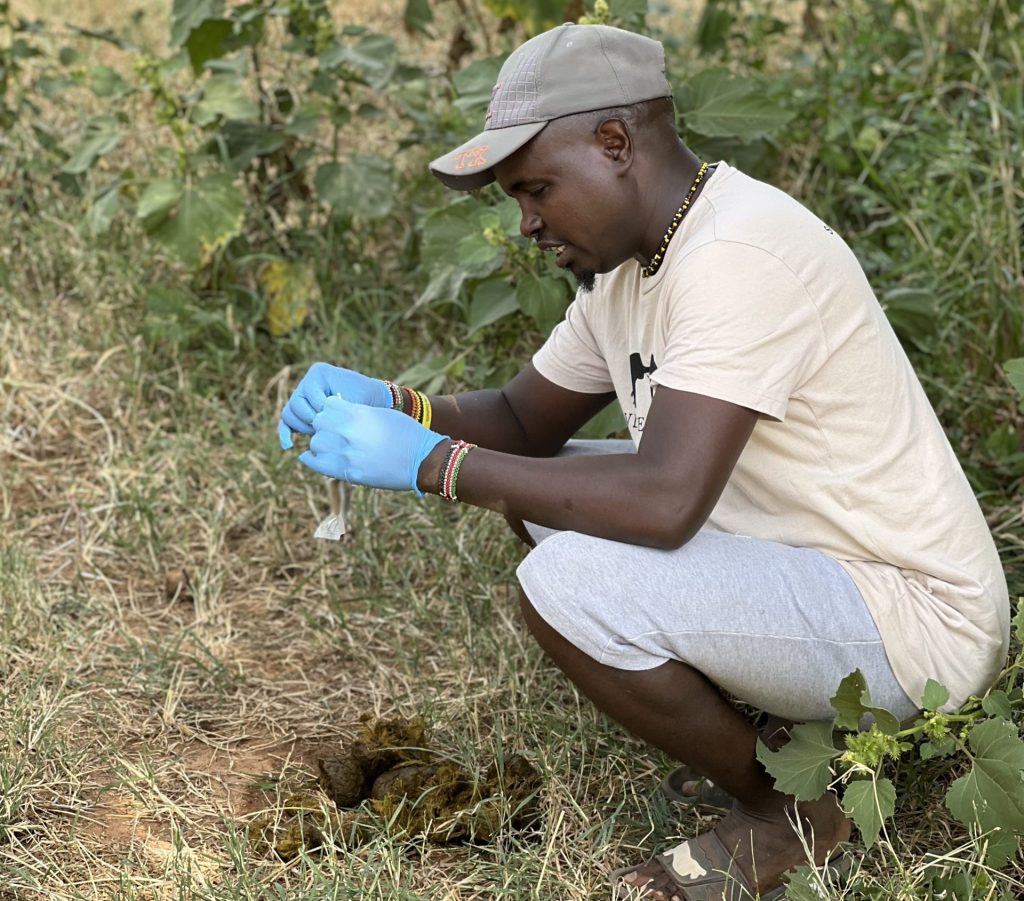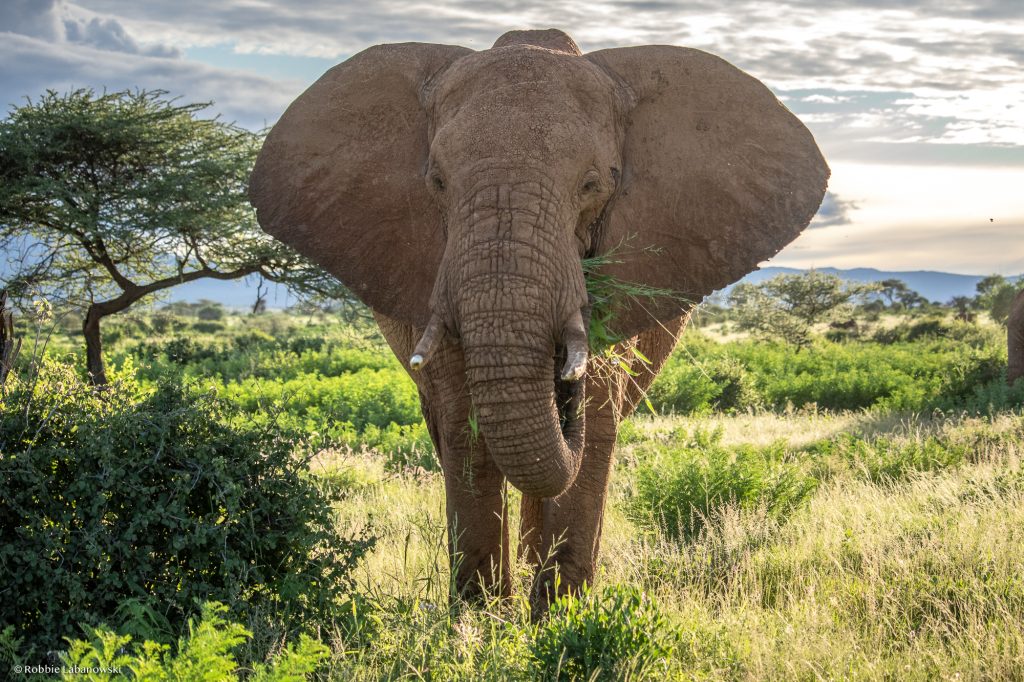Elephant dung, collected by Save the Elephants (STE) researchers almost two decades ago, has survived the test of time to play a key role in valuable new research about the intricacies of elephant diets.
In 2001 study author Thure Cerling and myself started collecting dung samples and hair tails from individual elephants in Samburu, northern Kenya, for a study into elephant seasonal diet changes and how they relate to migratory patterns. We chose members of the Royals and Artists family for our study. Back then we used a method called Stable Isotope Analysis, involving a chemical analysis of animal hair and dung.
During our analysis we were able to show that elephants switched from eating fresh grasses when it rained to eating trees and bushes during the long dry season. While this advanced study allowed us to identify broad-scale dietary patterns, we still couldn’t discern the different types of plants in the elephant’s diet.

Members of the Artists family feeding on fallen tree branches in Samburu National Reserve during the dry season © Salome Gitau/Save the Elephants
After 10 years of research, we completed our studies, published our papers and locked the dung and hair tails away in storage.
Gone but not forgotten it would seem.
In 2019, a team of researchers, including myself, were able to utlilise the old dung samples from Samburu, northern Kenya, to show that elephants, like humans, vary their diets in relation to how they are feeling and what is going on in their lives. We wanted to combine the decades-old dung and tail-hairs in an innovative method called DNA metabarcoding to efficiently and precisely analyse the dietary habits of elephants, down to the specific types of plants eaten by which animals in the group.
DNA metabarcoding is a cutting-edge genetic technique that allows researchers to identify the composition of biological samples by matching the extracted DNA fragments representing an elephant’s food to a library of plant DNA barcodes.
We already knew how important elephant dung was to the ecosystem as a source of nutrition for other wildlife. Elephant dung is also highly valued by the local Samburu community that live amongst elephants in northern Kenya. But would it survive 20 years in the stable isotope lab in Utah and still be fresh enough for researchers to identify the eating habits of the Royals and Artists?
We needn’t have worried. Study author Brian Gill, then a Brown post-doctoral associate, determined that the samples were still usable even after many years in storage.

STE researcher, David Letitiya, collects elephant dung samples in Samburu National Reserve. Dung samples, like these, are loaded with data on what elephants eat. © Tanya Onserio/Save the Elephants
Through their detailed analysis, the team of researchers were able to discover that dietary differences among individual elephants are often far greater than had previously been assumed. They also learnt that elephants vary their diets based not only on what’s available, but also their preferences and physiological needs. A pregnant female for example may have different cravings and requirements at various times in her pregnancy as we found in the study.
And the question we couldn’t solve 20 years earlier about the different types of plants in an elephant’s diet, was finally answered.
The Brown University study, which was published this month in Royal Society Open Science showed surprising variation from meal to meal – even among family members that forage together. Up to 137 unique plant DNA barcodes were detected in one faecal sample – revealing the true extent of variation in an individual’s diet. The findings also inform theories of why a group of elephants may forage together – the individual animals do not always eat exactly the same plants at the same time, so there will usually be enough plants to go around.
Last year, Save the Elephants, in conjunction with the Department of Biology at the University of Oxford, published a separate paper that also revealed fascinating facts about the dietary habits of African elephants. The study, published in Remote Sensing, showed that elephants preferred to select different foraging paths and plant species according to sex, age, reproductive status and also family dominance status.
Both of these studies have profound implications for elephant conservation, as they contribute to a better understanding of the foraging behaviours of groups and the approaches needed to ensure the elephants are not only physically nourished but also satisfied in their natural habitats.
And last but not least, the Brown study is further testament to the importance of elephant dung.

An elephant foraging in Samburu National Reserve. © Robbie Labanowski/Save the Elephants
Important links
To read the Brown University study, click here
To read the Stable Isotopes study, click here
To read the Remote Sensing study, click here

